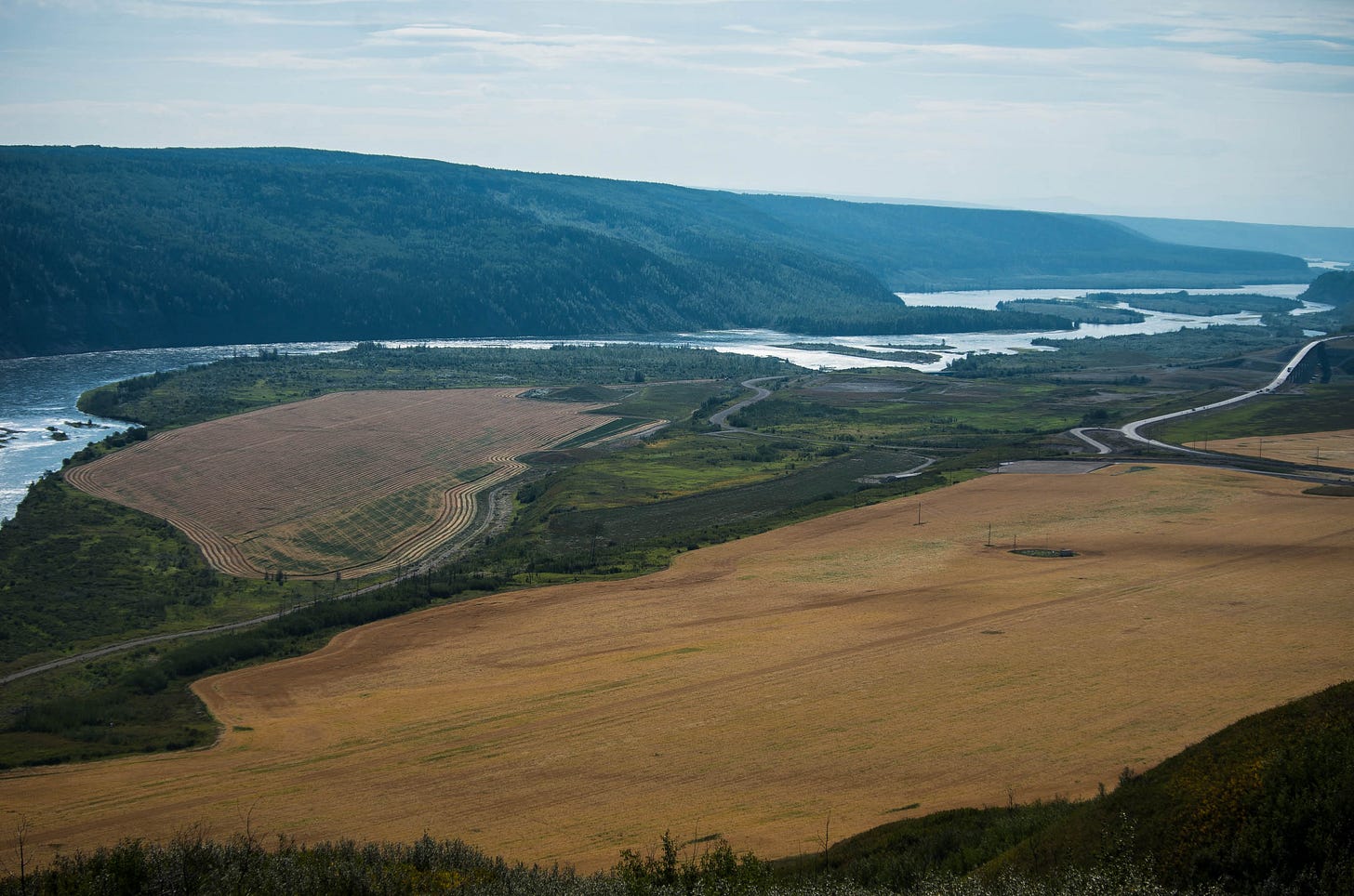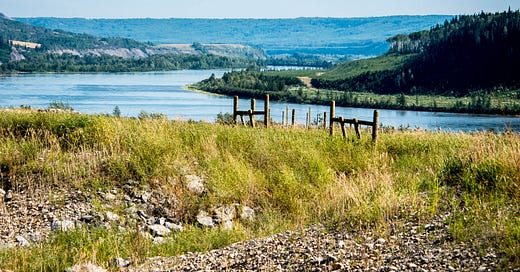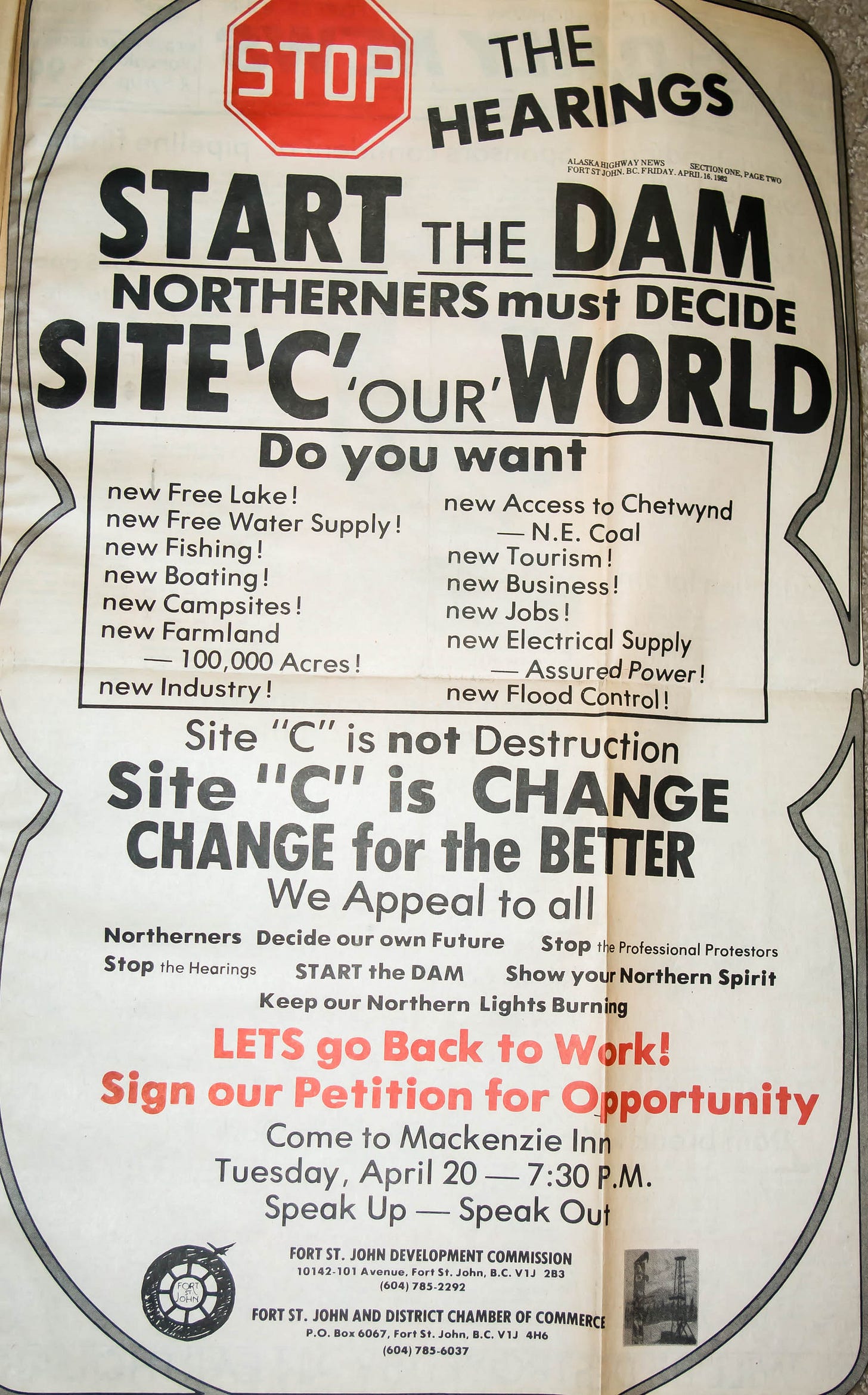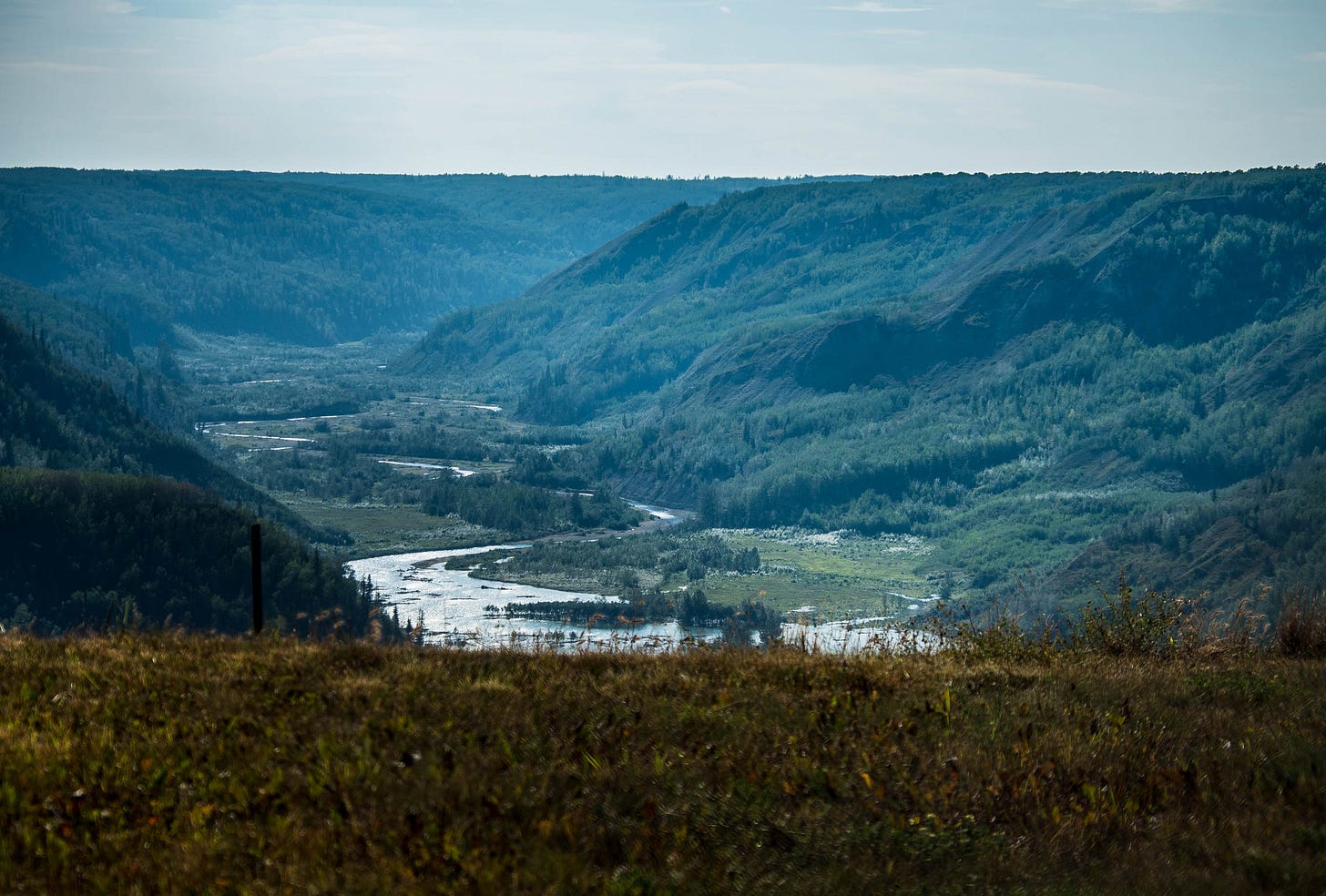The project that has been fraught with controversy since the early 1980s, has reached another step that will change the landscape of Peace River valley forever, as BC Hydro began filling the reservoir on August 25.
The project was first proposed in the 1950s, as part of a series of hydro-electric dams beginning with Site A, the WAC Bennett Dam, which was completed in 1967. Site B, the Peace Canyon Dam, was built in 1980.
Back in 1982, during the first round of British Columbia Utilities Commission hearings, the Fort St. John Development Commission and the Chamber of Commerce urged the public to stop the hearings and embrace the project so that people in the region could get back to work. Pierre Trudeau was Prime Minister, and the things were tough all over. The Site C project was seen as way to bring prosperity back to the region, as well as creating bonuses such as a new “free water source”, free fishing, an assured electrical supply, flood control and 100,000 acres of new farmland.
The proponents of the project said it wouldn’t be destructive or harmful. But many, including farmers and Treaty 8 First Nations, disagreed. Loss of prime agricultural land, destruction traditional Treaty 8 lands and sacred sites, and wildlife habitat were all cause for concern.
This difference of opinion resulted in protests, BCUC hearings, court cases and flip-flopping on the part of governments for the next three decades.

When the provincial government decided not to go ahead with Site C in 1982, and following more BCUC hearings, rejected the proposal again in 1989, stating that it didn’t need the electricity, it seemed the project may have gone the way of Site E at the BC-Alberta border.
Enter Premier Gordon Campbell, who in 2010, resurrected the project and fanned the flames of resistance in the Peace. Treaty 8 First Nations were the first to express their ire, by boycotting the official announcement of the project at the WAC Bennett Dam in April 2010.
The conflicts continued even after construction began in July 2015. One example is the West Moberly First Nation, which was in court in 2018, trying to get the project stopped because reservoirs lead to high levels of mercury in predatory fish, such as Bull Trout.
Reservoir and Final Steps
BC Hydro says it will take about four months to fill the 83-km long reservoir, with water levels expected to rise between 30cm and 3m per day. Initially, the biggest change will be noticed during the first week of flooding, at Site C itself and as far up the Peace River as Bear Flats. During this week, the water level is expected to rise approximately 15m at the dam.
All the boat launches and access points along the Peace River between the dam and Hudson’s Hope are now closed. They won’t reopen until a year after the reservoir filling is complete, as BC Hydro needs to watch reservoir conditions, including the stabilization of the surrounding land, and floating vegetation debris.
Once the reservoir is considered safe, the public will be able to access the new recreation area through various boat launches.
Originally intended to be producing energy by 2020, the Site C dam is now scheduled to begin generating electricity in December 2024, when the first generating unit comes online. The remaining five units are anticipated to be in service by the fall of 2025.
When fully online, the completed dam will provide 1,100 megawatts of capacity and produce 5,100 gigawatt hours of electricity annually, increasing the province’s electricity supply by about eight percent.
BC Hydro says that Site C will provide enough clean electricity to reliably power almost 500,000 homes or 1.7 million electric vehicles.






